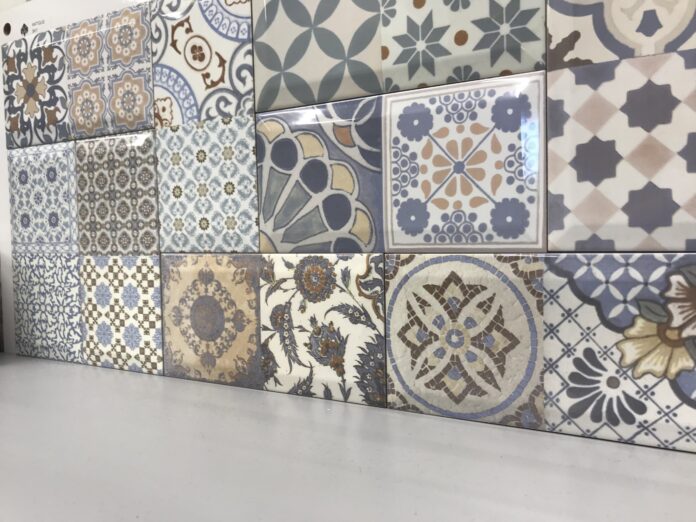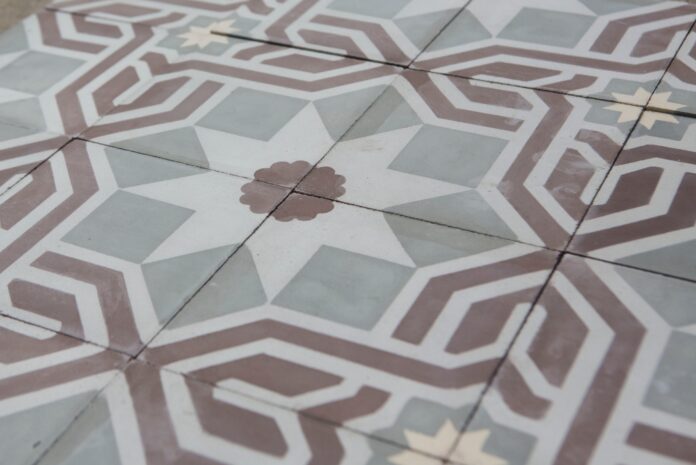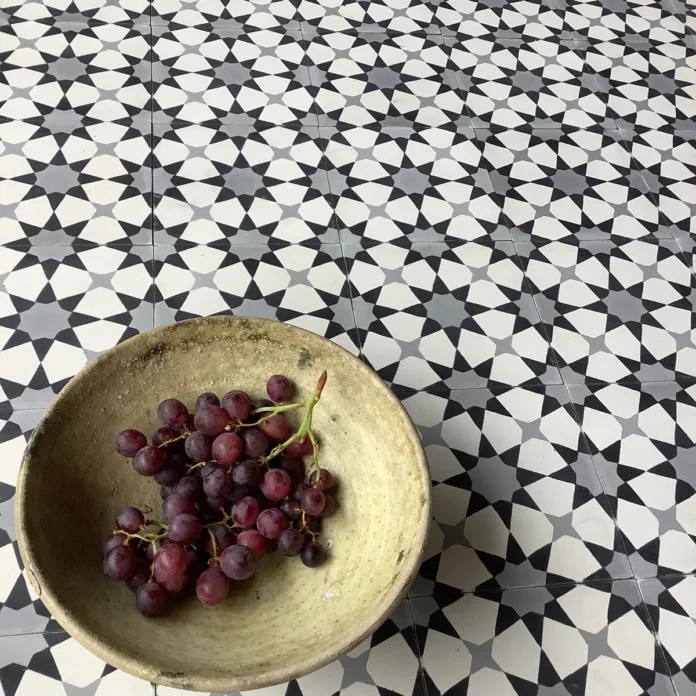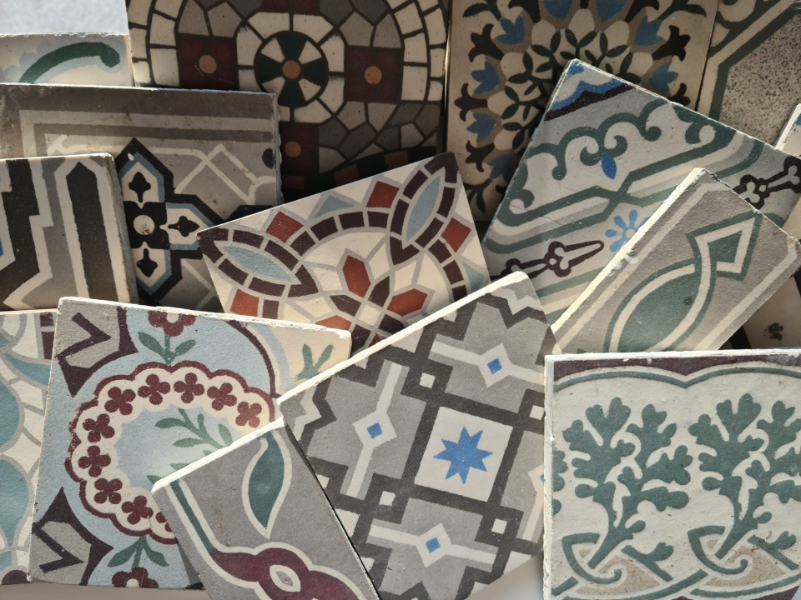These tiles are becoming increasingly popular in the world of sustainable building and interior design. But, there’s a lingering question: are these materials truly eco-friendly, or are they just a stylish nod to antiquity?
This blog post delves into the myths and realities surrounding reclaimed tiles, offering a comprehensive view of their environmental impact, aesthetic value, and practical benefits. By examining the evidence, we aim to provide clarity and help you make informed decisions whether you’re renovating your home or embarking on a new construction project.
The Sustainability

Reclaimed tiles, often salvaged from old buildings, carry a charm and history that new materials rarely possess. But beyond their aesthetic allure, how sustainable are they really? Reclaimed tiles contribute to environmental sustainability primarily by reducing the demand for new raw materials.
The process of extracting and processing new resources is often energy-intensive and polluting. By reusing tiles, we decrease the burden on natural resources and cut down on emissions associated with manufacturing new products. Moreover, using reclaimed materials can significantly reduce construction and demolition waste, a major source of landfill.
A common misconception is that reclaimed tiles require a lot of energy to restore to their former glory, which could negate their eco-friendly benefits. However, the truth is quite the opposite.
The energy required to clean and refurbish reclaimed tiles is minimal compared to the energy needed to produce new tiles. Additionally, by avoiding the manufacturing process, they also avoid the substantial carbon emissions associated with ceramic or porcelain production.
Aesthetic Value and Historical Significance
Choosing reclaimed tiles isn’t just about making an eco-friendly choice; it’s also about embracing a piece of history and adding unique character to your space. Each reclaimed tile carries its own story, having survived years or even decades in a different setting.
This historical richness adds an irreplaceable aesthetic value that new, mass-produced tiles can’t match. Whether it’s intricate old-world patterns or the rugged look of weathered stones, they offer a distinct style that can be a central feature in any interior design scheme.
While the unique look can enhance any room, blending them with modern decor can be challenging. It’s a myth that they only fit in with traditional or rustic designs.
In reality, these materials can complement a wide range of styles from minimalist to contemporary. The key is in choosing the right type of tile and knowing how to mix textures and colors effectively to create a cohesive look.
Practical Benefits and Misconceptions

Beyond aesthetics, they offer practical benefits that are often overshadowed by common myths.
Durability and Maintenance
One of the myths surrounding reclaimed tiles is that they are less durable and more difficult to maintain than new tiles. This isn’t necessarily true. Many of them come from sources where they were made to last, using techniques and materials that are no longer common in modern tile manufacturing.
Additionally, the wear and tear they have already endured can actually add to their resilience and character, making them suitable for high traffic areas and reducing the need for frequent replacements.
Cost-Effectiveness and Installation
Another concern often voiced is the cost and difficulty of installing these tiles. While it’s true that these tiles can sometimes be more expensive upfront due to their rarity and the labor involved in sourcing and preparing them, they can be cost-effective in the long run.
They can increase property values due to their aesthetic appeal and durability. Moreover, installation techniques are generally the same as for new tiles, requiring no special tools or skills beyond those possessed by any professional tile installer.
Balancing Eco-Friendly Choices and Modern Needs

When integrating tiles into modern architecture and design, it’s essential to strike a balance between sustainability and contemporary requirements. This section explores how they can meet modern standards without compromising their environmental benefits.
A common myth is that tiles may not meet modern building standards, particularly in areas like insulation, safety, and energy efficiency. However, they can be just as compliant as new materials when properly sourced and installed.
For instance, many reclaimed clay tiles offer excellent thermal properties that can enhance a building’s energy efficiency. Moreover, they often exceed the durability requirements of new materials, ensuring safety and longevity.
Contractors and architects familiar with reclaimed materials can effectively integrate them into modern buildings to meet or exceed current standards.
Their thermal mass helps regulate indoor temperatures, reducing the need for heating and cooling. This not only makes a home more comfortable but also lowers energy consumption and costs.
Moreover, when combined with other sustainable building practices, such as proper insulation and energy-efficient windows, they contribute to an overall greener building approach. Thus, using them is a practical decision as much as an aesthetic one, supporting modern energy efficiency goals while adding historical charm.
Overcoming Challenges with Reclaimed Tiles
While the benefits are clear, potential users often face challenges that can deter them from choosing these materials. Understanding these challenges and knowing how to address them is crucial for more widespread adoption.
One of the biggest challenges with them is ensuring a reliable and consistent supply. Since these materials come from demolished or renovated sites, their availability can be unpredictable. Furthermore, verifying the authenticity and quality requires diligence and expertise.
Potential buyers should work with reputable dealers who can provide necessary documentation and history of the tiles. This ensures that the materials not only are genuinely reclaimed but also have been sourced responsibly, maintaining the integrity of their eco-friendly claims.
Conclusion

They offer a compelling mix of environmental sustainability, unique aesthetic appeal, and practical benefits. By debunking common myths about these materials, we hope to have shown that they are not just relics of the past but valuable components of contemporary design and construction.
Whether you are building a new home or renovating an existing one, consider reclaimed tiles not only for their beauty and history but also for their positive impact on the environment and their long-term value in your project.







